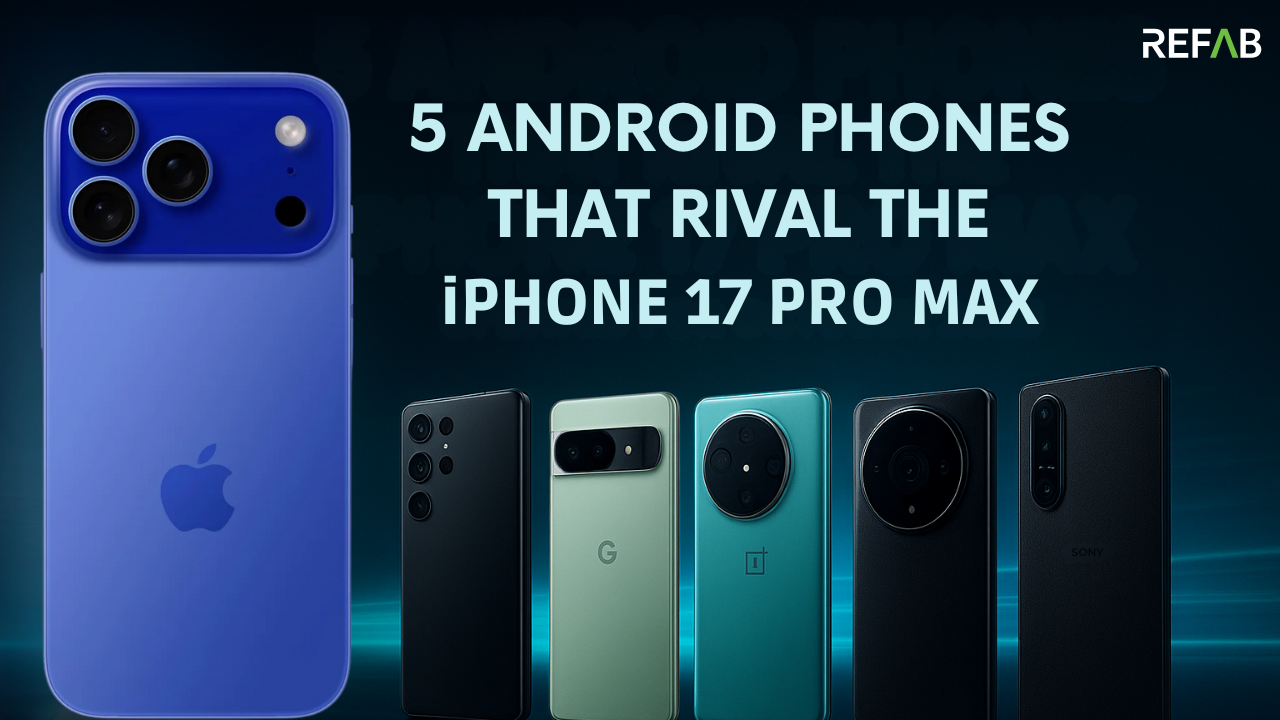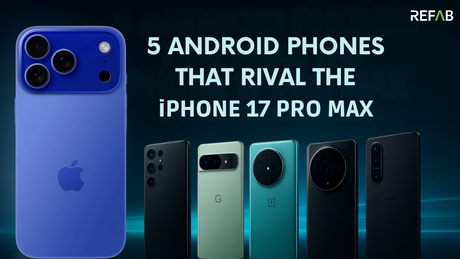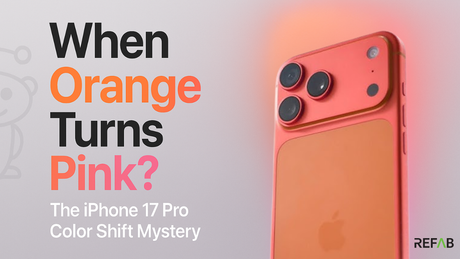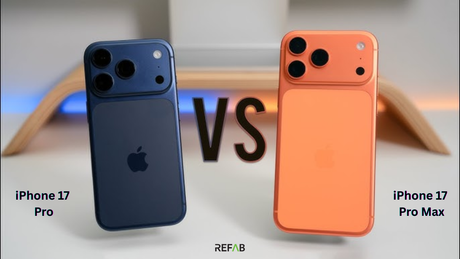Introduction
Apple’s iPhone 17 Pro Max raised the bar for performance, cameras, and pro-class video tools in 2025. But if you’re shopping the Android world today, you don’t have to accept second-best. Several Android flagships match - and in specific areas sometimes outpace - the iPhone 17 Pro Max, delivering top-tier displays, powerhouse chips, and camera systems that answer pro-level demands. This guide breaks down five Android phones you should consider if you want iPhone-level polish without locking into Apple’s ecosystem.
In this post you’ll find:
- A clear snapshot of each phone and why it competes with the iPhone 17 Pro Max
- Strengths and weak spots to help you choose by use case (photo, battery, pro video, or raw performance)
- A compact comparison table for quick reference
- A neutral recommendation tailored to different buyer profiles
Quick comparison (at a glance)
|
Phone |
Why it competes with iPhone 17 Pro Max |
|
Samsung Galaxy S25 Ultra |
Flagship display, 200MP-class camera hardware, longest battery + pro video features |
|
Google Pixel 10 Pro |
Best-in-class computational photography and deeper Google AI features |
|
OnePlus 13 (Pro class) |
Speed-first hardware, aggressive value-for-performance, fast charging |
|
Xiaomi 15 Ultra |
Imaging-focused design with Leica/partnered optics and top chipset performance |
|
Sony Xperia 1 VII |
Pro video and audio toolkit with creator-grade capture controls |
1) Samsung Galaxy S25 Ultra - The all-rounder with a pro camera and polished screen
Why consider it: Samsung keeps refining its Ultra line, and the S25 Ultra lands as an undeniable Android counterpart to the iPhone 17 Pro Max. Expect a huge, color-accurate Dynamic AMOLED display, powerful on-device AI features, and a high-resolution main camera array designed for flexible focal lengths and long-range zoom. If you shoot and edit on-device, or want a display that’s as bright and usable in sunlight as Apple’s Pro displays, the S25 Ultra is the closest analog.
Strengths
- Tremendously bright, high-refresh display suitable for HDR and pro editing workflows.
- Multi-lens camera system with extreme-resolution sensor options and long-range optical zoom modes.
- Samsung’s One UI adds camera features and ecosystem continuity (DeX, S Pen productivity in Ultra variants).
Trade-offs
- Software skin and update cadence differ from Apple’s iOS; Samsung has improved update windows but platform experience is different.
- Size and weight may be bulkier than some iPhone models.
Best for: Users who want the most flexible camera hardware and a large pro-grade display for editing and entertainment.
2) Google Pixel 10 Pro - Computational photography and AI-first software
Why consider it: Google’s Pixel lineup has distilled computational photography into a distinct advantage. The Pixel 10 Pro brings advanced on-device AI and photo/video processing that make night shots, portrait effects, and multi-frame edits exceptionally easy. If you value images that “look right” out of camera and integrated AI features (assistant-driven editing, advanced subject extraction), a Pixel is a top alternative to Apple’s camera and software refinement.
Strengths
- Outstanding computational photography and intelligent editing tools baked into the camera app.
- Strong promise of long software support and AI features that run on-device.
- Clean Android experience that prioritizes photo/video output quality.
Trade-offs
- Raw sensor hardware may differ from some Ultra-class competitors; Google’s edge is software.
- Battery endurance and hardware feature sets vary by generation.
Best for: Photographers and creators who prefer computational results and AI-driven workflow over pure hardware spec chasing.
3) OnePlus 13 (Pro-class variant) - Speed, charging, and value
Why consider it: OnePlus has doubled down on flagship performance and real-world speed. The OnePlus 13 (Pro-class models) combine high-refresh displays, aggressive memory and storage configurations, and some of the fastest wired/wireless charging in the Android ecosystem. If raw snappiness, long uptime from fast charging, and a near-flagship price/performance ratio are priorities, OnePlus is a smart iPhone alternative.
Strengths
- Very fast chipsets and tuned OxygenOS for low-latency performance.
- Extremely quick wired/wireless charging for minimal downtime.
- Usually more aggressive value (performance per rupee) than other flagships.
Trade-offs
- Camera performance has improved but historically trails the very top camera systems; OnePlus narrows the gap each cycle.
- Software customizations differ from stock Android and iOS.
Best for: Power users and gamers who want peak performance and minimal charging constraints.
4) Xiaomi 15 Ultra - Imaging ambition and powerhouse silicon
Why consider it: Xiaomi’s Ultra line targets creators with camera systems developed alongside professional optics partners and focused on high-resolution capture. Combined with contemporary flagship chipsets and software tuned for photographers, the Xiaomi 15 Ultra is a natural contender for people who prioritize camera versatility and heavy performance.
Strengths
- Camera hardware and optics aimed at professional-level capture (large sensors, telephoto options).
- Top-tier chipset and aggressive performance tuning.
- Often competitive price points for flagship-level specs.
Trade-offs
- Software experience and bloat may differ from more tightly controlled ecosystems (iOS).
- Regional availability and update cadence may vary.
Best for: Enthusiasts who want hardware-first camera performance and maximum imaging flexibility.
5) Sony Xperia 1 VII - The creator’s choice for video and audio capture
Why consider it: Sony’s Xperia line is built around pro media creation. The Xperia 1 VII emphasizes manual controls, cinematic video features, and audio quality - making it a direct choice for filmmakers and creators who want hardware that mirrors professional camera workflows. The device often exposes granular capture controls that go beyond most competitors.
Strengths
- Cinema-oriented video modes, advanced frame control, and specialized audio features.
- Clean, focused features aimed at creators (manual controls, color profiles).
- Unique appeal for those already in the Sony camera ecosystem.
Trade-offs
- Design and mainstream polish may lag purely consumer-focused flagships.
- Software updates and mainstream feature parity can vary.
Best for: Filmmakers and serious content creators who prefer deep manual control on a phone.
Who should pick what?
- If you want a direct iPhone alternative with the biggest screen and most camera hardware: Samsung Galaxy S25 Ultra.
- If you want the smartest computational photos and AI-first features: Google Pixel 10 Pro.
- If you want raw speed and fastest charging at a better price point: OnePlus 13 (Pro-class).
- If imaging hardware and Leica-class optics matter most: Xiaomi 15 Ultra.
- If you are a creator who needs pro video/audio controls: Sony Xperia 1 VII.
Final verdict
There is no single “best” phone for everyone. As of October 30, 2025, Android offers multiple flagships that compete head-to-head with the iPhone 17 Pro Max in different ways: Samsung for a balanced pro experience, Google for AI/photo smarts, OnePlus for speed and charging, Xiaomi for imaging hardware, and Sony for creator-focused capture. Pick the model that matches the features you actually use.
If you’re considering flagship options (including the iPhone 17 series), Refab offers fast delivery and strong purchase protection across the Gulf: 1-day delivery, 1-year warranty, free shipping, and competitive prices. Browse iPhone 17 models and compare offers at:
https://www.refab.me/collections/iphone-17-series








